Cover photo by Neels Jackson.
Find this species in the FBIS database (Freshwater Biodiversity Information System) here.
Family Libellulidae
Identification

Near Hluhluwe, KwaZulu-Natal
Photo by Ryan Tippett
Small size
Length attains 38mm; Wingspan reaches 64mm.
Male Violet Dropwings are unmistakable, being brilliant violet-red with red veins in the wings. Violet Dropwing males could perhaps be confused with the male Red-veined Dropwing (Trithemis arteriosa). Red-veined Dropwings often show a violet hue on the thorax, but are distinctly red in overall colouration. The two can be further separated by the shape, colouration, and patterning of the abdomen.
Female Violet Dropwings are yellow and brown. They are distinguishable from other dropwings by the characteristic black markings on the last two abdominal segments.
Click here for more details on identification.
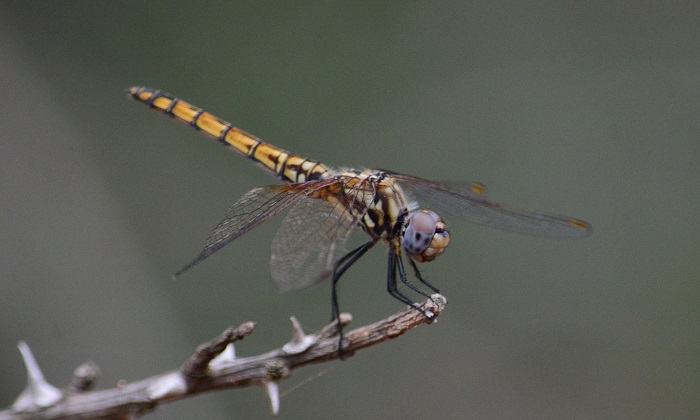
Near Hluhluwe, KwaZulu-Natal
Photo by Ryan Tippett
Habitat
The Violet Dropwing inhabits a range of freshwater habitats, including lakes, marshes, ponds, dams, and rivers. It prefers still or slow-moving waters and is mostly found in the warmer savanna regions.

Photo by Ryan Tippett
Behaviour
Male Violet Dropwings are very conspicuous as they perch at prominent, exposed sites over the water. They often also sit on rocks closer to the ground. Like others in the genus, they received the common name of ‘dropwings’ because of their habit of immediately lowering their wings after landing on a perch. Females occupy the same areas as the males, but can also be found some distance from the water.

St. Lucia, KwaZulu-Natal
Photo by Ryan Tippett
Status and Conservation
The Violet Dropwing is a common and widespread species. It is listed as of Least Concern in the IUCN Red List of Threatened Species. The Violet Dropwing is a hardy and adaptable species. It readily makes use of man-made and somewhat degraded habitats.
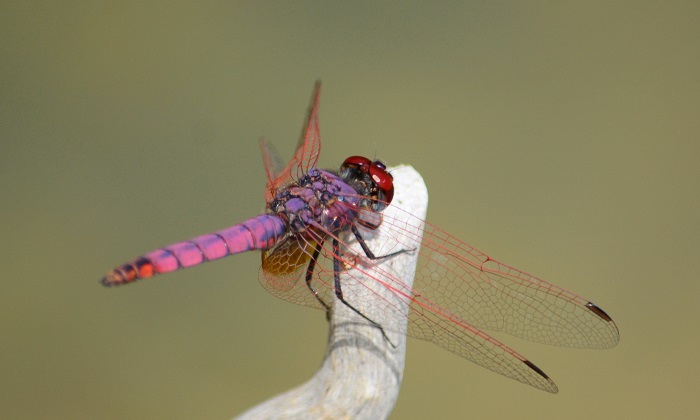
Near Hluhluwe, KwaZulu-Natal
Photo by Ryan Tippett
Distribution
Trithemis annulata is found virtually throughout Africa and also occurs in the Middle East, the Arabian Peninsula, and southern Europe. The Violet Dropwing is widespread in South Africa. It is most common in the north and east, but scattered records exist over most of the country.
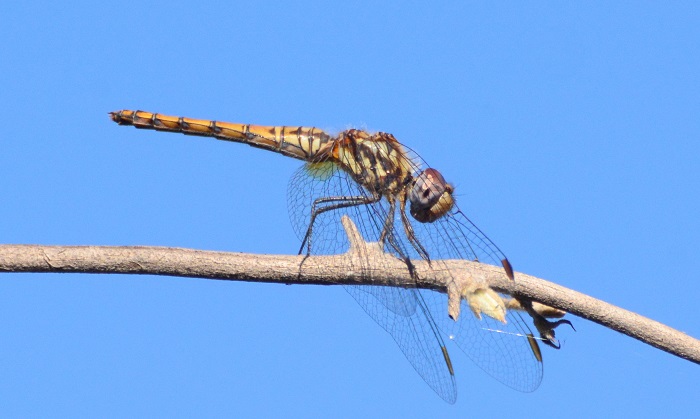
Linyanti, Botswana
Photo by Ryan Tippett
Below is a map showing the distribution of records for Violet Dropwing in the OdonataMAP database as at February 2020.

Below is a map showing the distribution of records for Violet Dropwing in the OdonataMAP database as of December 2024.
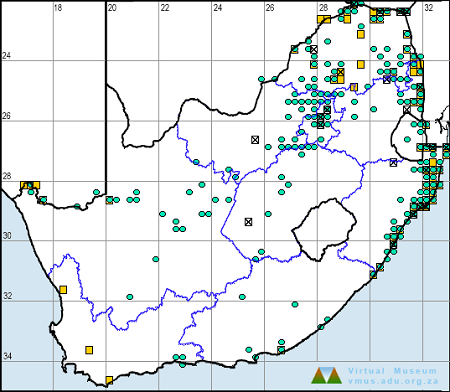
The next map below is an imputed map, produced by an interpolation algorithm, which attempts to generate a full distribution map from the partial information in the map above. This map will be improved by the submission of records to the OdonataMAP section of the Virtual Museum.


Ultimately, we will produce a series of maps for all the odonata species in the region. The current algorithm is a new algorithm. The objective is mainly to produce “smoothed” maps that could go into a field guide for odonata. This basic version of the algorithm (as mapped above) does not make use of “explanatory variables” (e.g. altitude, terrain roughness, presence of freshwater — we will be producing maps that take these variables into account soon). Currently, it only makes use of the OdonataMAP records for the species being mapped, as well as all the other records of all other species. The basic maps are “optimistic” and will generally show ranges to be larger than what they probably are.
These maps use the data in the OdonataMAP section of the Virtual Museum, and also the database assembled by the previous JRS funded project, which was led by Professor Michael Samways and Dr KD Dijkstra.

Near Hluhluwe, KwaZulu-Natal
Photo by Ryan Tippett
Further Resources
The use of photographs by Neels Jackson is acknowledged. Other photographs by Ryan Tippett.
Violet Dropwing Trithemis annulata (Palisot de Beauvois, 1807)
Other common names: Purpervalvlerkie (Afrikaans)
Recommended citation format: Loftie-Eaton M; Navarro R; Tippett RM; Underhill L. 2025. Violet Dropwing Trithemis annulata. Biodiversity and Development Institute. Available online at https://thebdi.org/2020/05/07/violet-dropwing-trithemis-annulata/
References: Tarboton, M; Tarboton, W. (2019). A Guide to the Dragonflies & Damselflies of South Africa. Struik Nature.
Samways, MJ. (2008). Dragonflies and Damselflies of South Africa. Pensoft
Samways, MJ. (2016). Manual of Freshwater Assessment for South Africa: Dragonfly Biotic Index. Suricata 2. South African National Biodiversity Institute, Pretoria
Martens, A; Suhling, F. (2007). Dragonflies and Damselflies of Namibia. Gamsberg Macmillan.
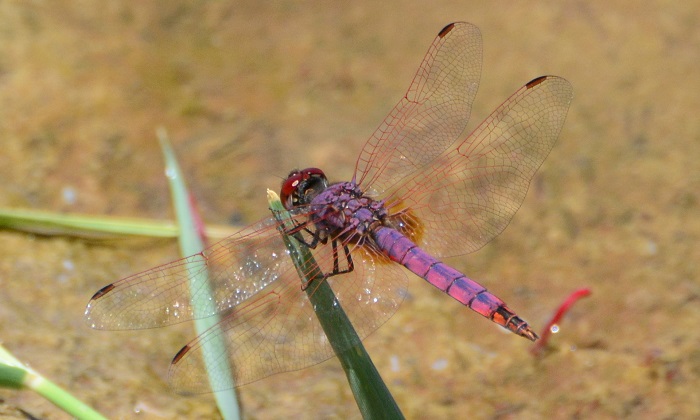
Orange River, Upington, Northern Cape
Photo by Ryan Tippett

